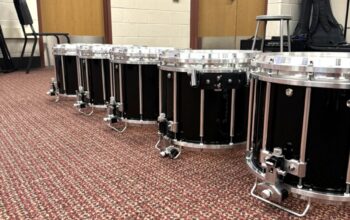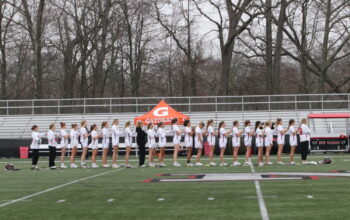
Gogo Jones
Reporter
First introduced as an independent study project, the Financial Literacy class was launched this year. The course aims to help students achieve their goals through prudent and informed management of their financial resources. Today, Financial Literacy is offered to high schoolers in thirteen states and mandatory for them to take in nine.
The combination of a failing economy and the belief that most American adults lack crucial financial knowledge was what prompted math teacher Chris Tournas to bring the course to the curriculum.
“This class wouldn’t have existed five years ago,” Mr. Tournas said. He began to conceptualize the organization of a practical financial knowledge course after the economic collapse of 2008. “It was driven by adults. … most of whom probably couldn’t pass my tests,” he said.
Mr. Tournas agrees with the National Endowment of Financial Education organization, which said that financial competence is rooted in the learned attitudes and behaviors toward money, especially when first taught at an early age. “Providing basic financial planning education to teens today will help create a population of fiscally responsible and self–reliant adults tomorrow,” Mr. Tournas said.
In contrast to traditional math courses, Financial Literacy focuses on essential financial values that will benefit students in college and beyond.“Everything the students’ learn in this class they will be able to apply to their lives,” Math Department Chair Jennifer Lee said.
The course is divided into eight units that develop skills in all of the financial fields including investing, banking, budgeting, taxes and home ownership. “It’s pretty cool actually,” senior Kelly Donovan said. “We’re learning how to invest in the stock market and we’re given a certain amount of fake money to spend on shares in different companies.”
However, with the entire skill set being compacted into one semester, students have the option of taking another math class for the other half of the year. Many have taken advantage of the flexibility, such as senior Grayson Cordes. “I had the option of taking Pre Calculus for a full year or to take this course for half a year along with Stat,” Grayson said.”I just looked at the curriculum for Financial Literacy and not only was it very applicable to every day life but very relevant as it’s something you hear about everyday. It’s made my perception of math much more positive than it use to be. ”
Mr. Tournas said that Grayson’s approach is shared by many of the other students in his class, and explains why those who had struggled in previous math classes have found success in Financial Literacy. “Students just find it more interesting and applicable to their lives,” he said.
As of now, the course is only offered to seniors, but with sixty-five students signed up for next semester, Mr. Tournas is looking to expand. “My goal is to have this offered to as many students as possible,” he said.
Grayson said that most students would benefit from acquiring useful and practical financial knowledge. “I talked with my brother at college and he said he went with a bunch of his friends to a lecture on the stock market because it was a skill he was never taught in high school and something he wanted to understand,” he said.
For the program to grow, Mr. Tournas said the class would have to be scrapped of a designated level. “If it is considered an M2 course, many students may consider it a step down from their potential, when in fact these are skills that should be taught to everyone .”



